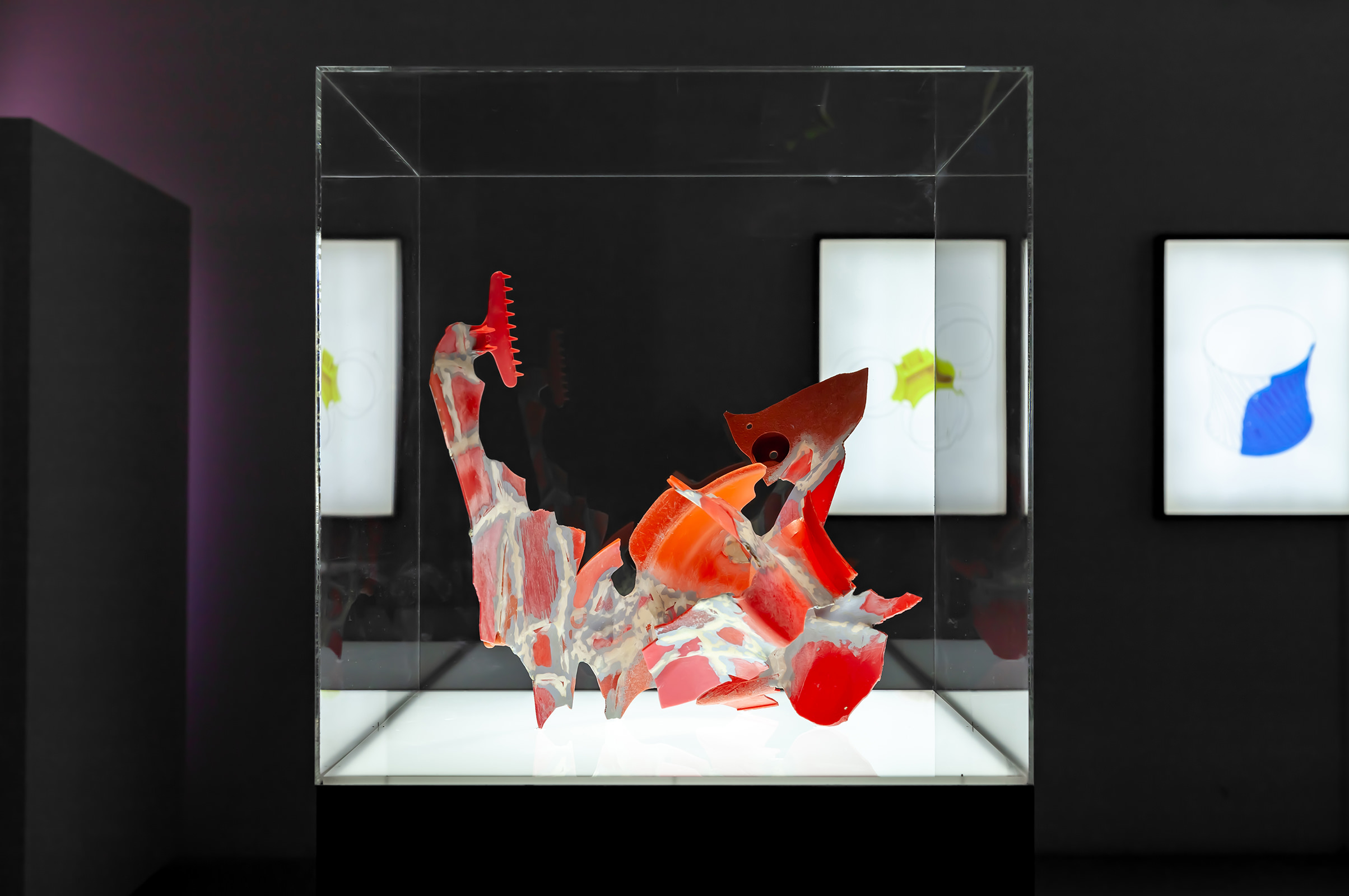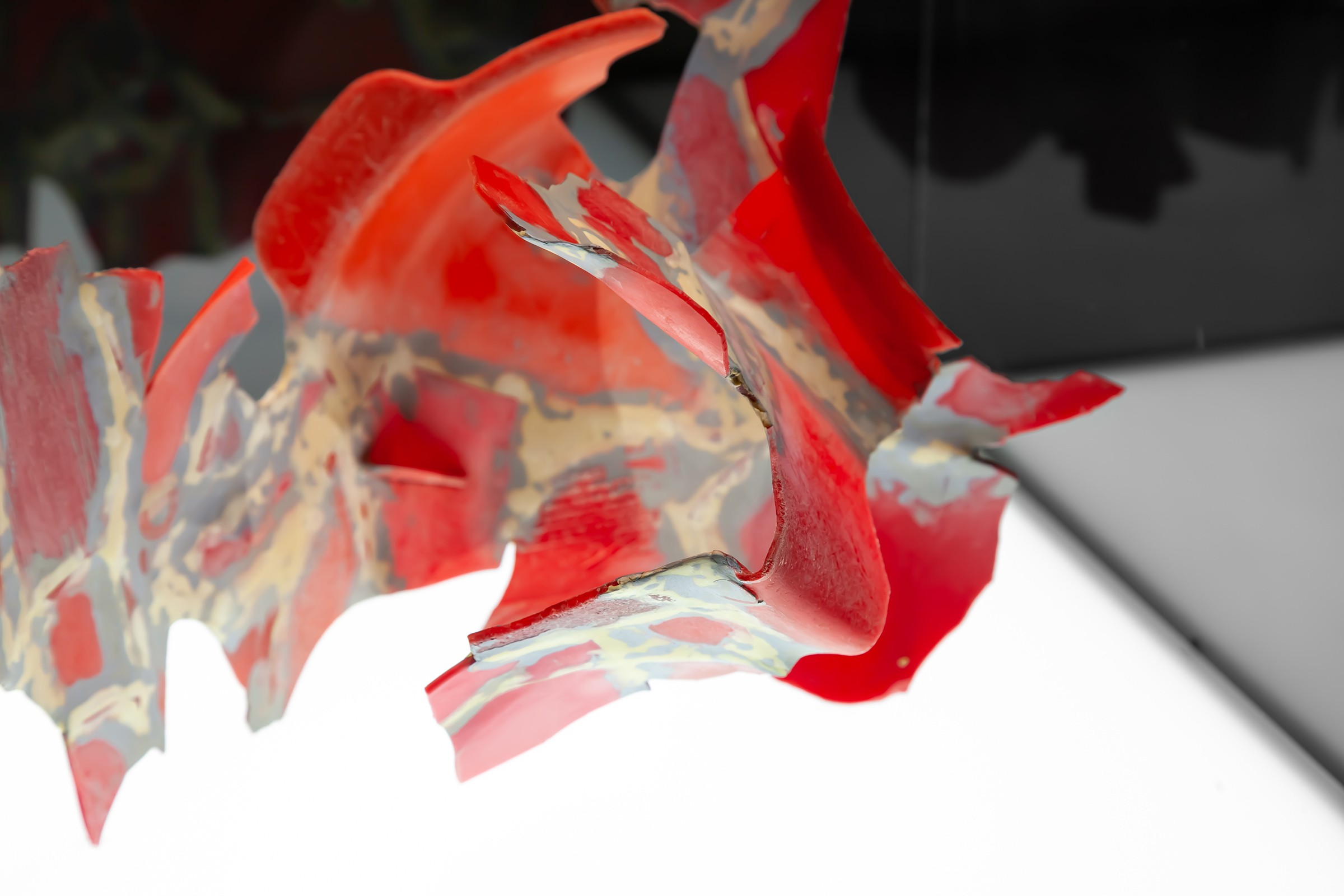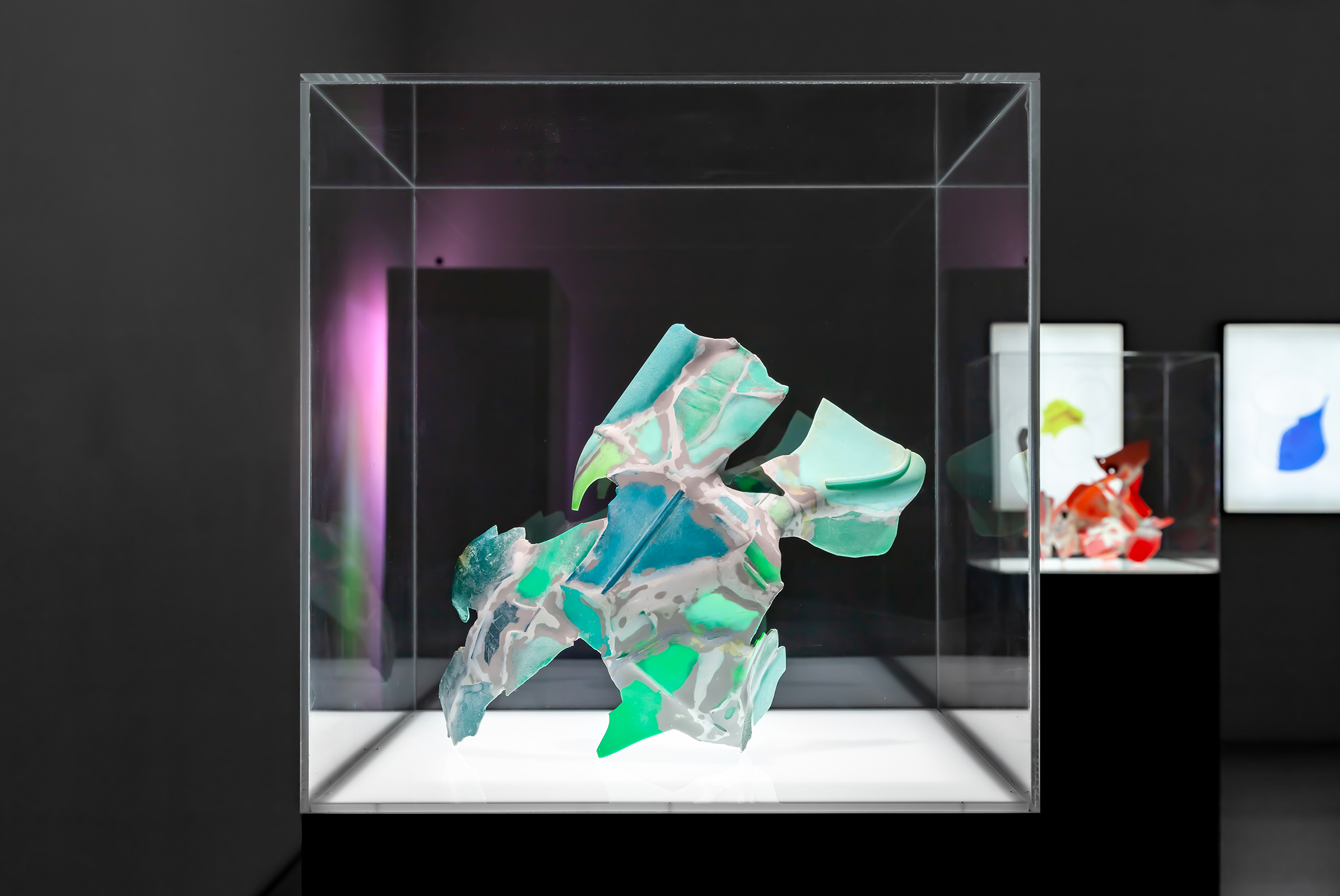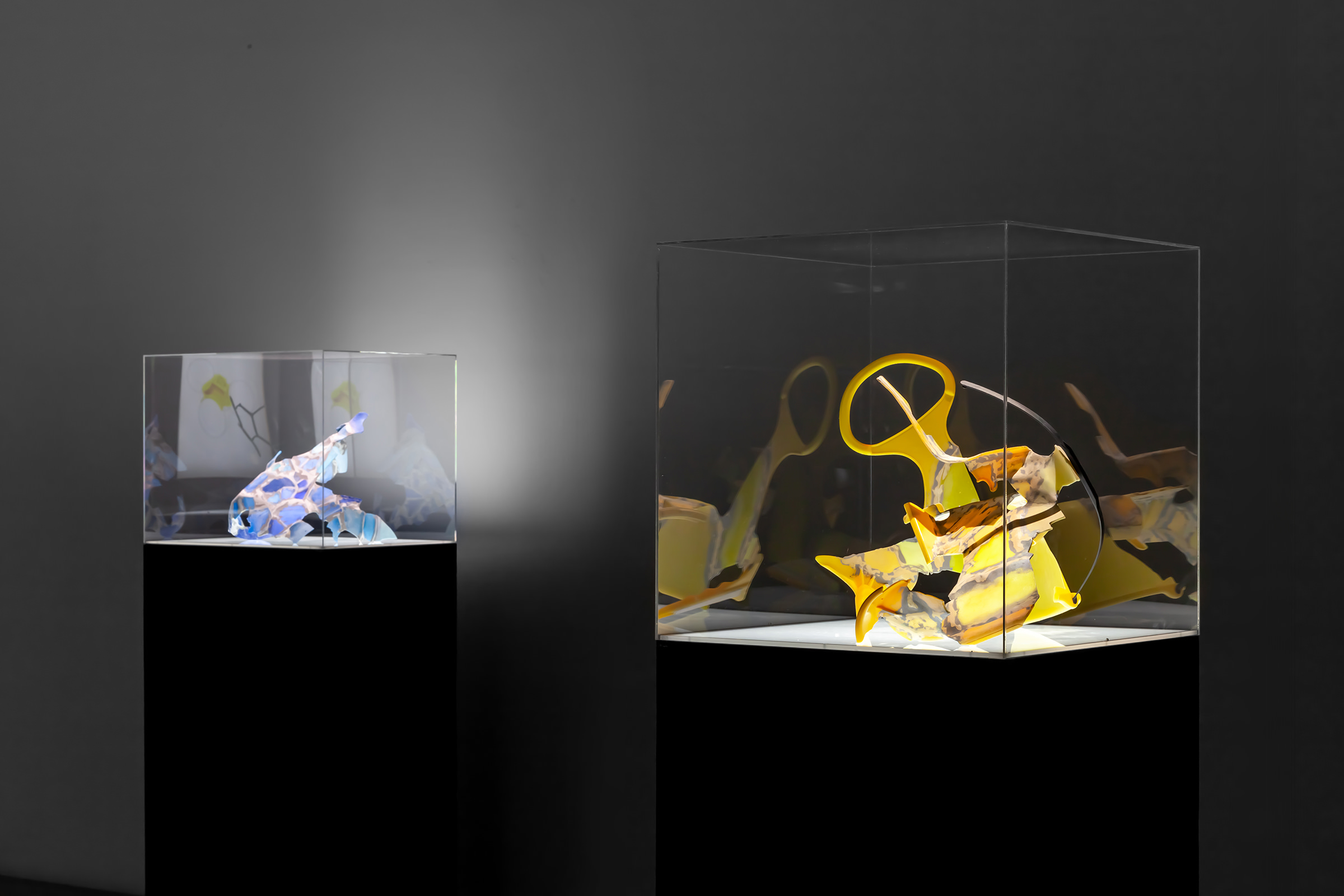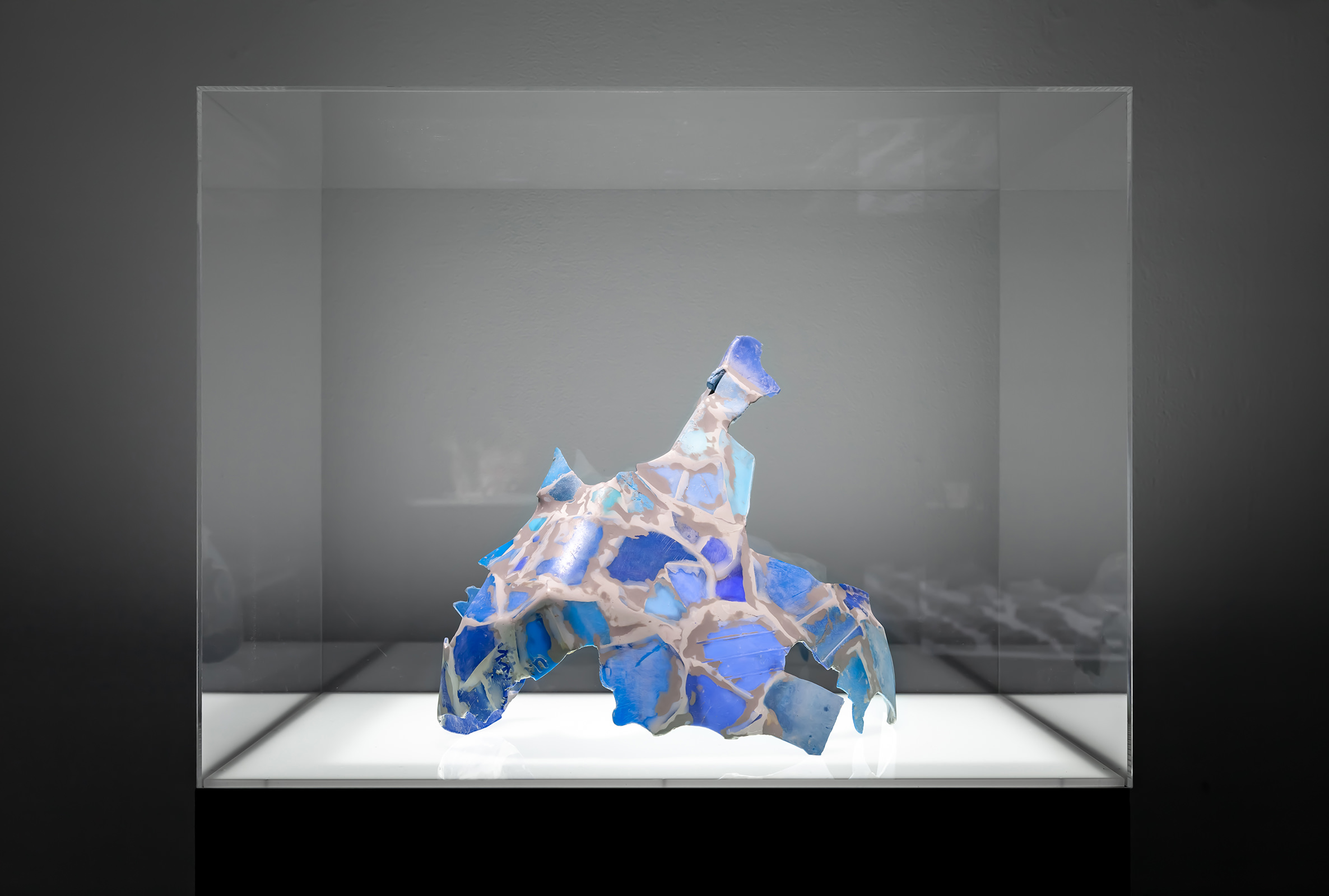Artifact
2019-
Marine plastic, putty
A series of sculptures consisting of plastic fragments collected at beaches. The artist endeavored to repair the objects in imitation of archaeological methods of restoration. However, the shapes of the restored objects appear distorted because the plastic pieces were washed ashore from different countries by a sea current. This peculiar distortion might evoke the relationship between human beings and plastic. Anzai imagines how our everyday life might be restored tens of thousands of years later, if an archaeologist in the post-apocalyptic future were to research excavated plastic pieces.
考古学で出土した土器片を組み合わせて修復する「復元」のように、この作品は海岸で収拾されたプラスチック片を組み合わせて作られたものです。 実際のプラスチック片は、複雑な海流によって様々な国々から海岸へと打ち上げられるので、「復元」された日用品は奇妙な形に歪んでしまっています。この歪みは、私たちとプラスチックの関係をそのまま表しているかのようです。 数万年後、もし人類以後の考古学者が同じ場所から「出土」したプラスチック片を元に何かを修復しようとしたら。 彼らの前に、私たちの生活はどのように「復元」されるのでしょうか。

